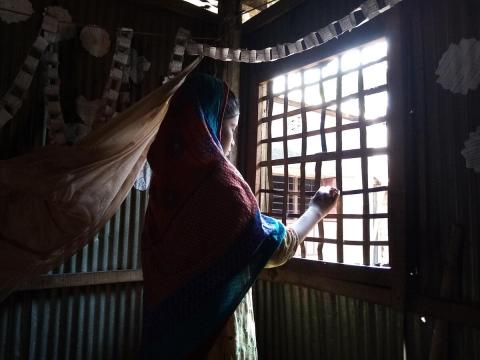Stopping the other pandemic, in the age of COVID.

Tamara Tutnjevic shares five things governments must do to end violence against children while fighting COVID-19.
Every year at the beginning of July, United Nations host the High Level Political Forum on Sustainable Development. This year, the forum has quite an ambitious task: to reflect on progress in implementation of Agenda 2030 in the context of the biggest public health pandemic in the recent history. A crisis that has, quite unexpectedly, revealed another pandemic that has been plaguing our societies. The pandemic of violence against children.
Within weeks of putting in place measures to contain the COVID-19 pandemic, including restriction of movement, closure of public spaces and schools, we have witnessed of the increase in violence at home. From Cyprus to Argentina, SOS hotlines on domestic violence have been reporting increased numbers of calls and incidents of violence. World Vision’s recent Aftershocks report estimated an 32% increase in violence against children as a result of COVID-19 outbreak, leaving up to 85 more million children vulnerable to violence. These predictions are sadly proving to be true as we receive more reports from different communities where we work–all pointing to increase in violence at home, in communities and online.
Even as some countries are easing up movement control measures, care centres and schools are not likely to reopen everywhere, public spaces may still be out of reach for children and, with looming economic crisis, the threat of violence is not likely to disappear. It is in fact, more likely to become permanent fixture in the months and years to come with devastating impact on children and our societies. If we are to safeguard our children form the future marked by fear and violence, we need to act urgently.
Yet, the truth is, protection of children from violence is rarely high on the political and national development agendas. The strong commitments are made, as the Agenda 2030 clearly shows, but they are yet to result in a lasting change. At the same time, five months of response to COVID-19 have shown that things can be done quickly to address an imminent and increasing threat of violence.
We have seen plethora of interventions supported by governments, civil society and interactional organisation including scaling up education and information sharing campaigns to support positive parenting; developing technical solutions to give children options to report violence and finding ways to support those at risk through training of community health workers and first responders. We have also seen significant public and media interest in uncovering the increasing risk of violence. But the response to COVID 19 has also shown that these interventions are just a patch to cover the soaring gaps in already insufficient and underfunded prevention and response services and systems. Gaps that can only widen with the prospects of prolong pandemic, increasing vulnerability to violence and economic crisis.
We are at the brink of the new era in humanity, facing a crisis that has exposed all the weakness in our world – inequality, racism, and violence against children. The promise of peaceful, just and inclusive societies, embodied in the Agenda 2030 and especially of SDG 16, is more important than ever. So is fulfilling of the most transformative part of that promise: ending violence in childhood.
The debate on Decade of Action and Delivery as well as agreements on COVID recovery packages represent the right opportunity for governments and donors to prioritise the protection of children from violence. Here are five things that governments must do to build back better and accelerate actions to end violence against children:
- Recognise child protection as a life-saving intervention and scale up interventions that work to prevent violence to reach every child wherever she or he lives
- Protect and increase funding allocated to systems and services to prevent and end violence against children
- Put in place social protection measures to support vulnerable families and ensure access to essential services for children to discourage child marriage, child labour and sexual violence
- Strengthen and invest in data collection mechanisms to monitor how effectiveness of efforts to end violence against children
- Listen to and involve children in development of policies and solutions that affect their lives.
Governments comprise many people who themselves are fathers and mothers and we appeal to them to put their country's children first and ensure that violence prevention and response services do not fall off the agenda and become victims to economic crisis and fiscal austerity. The world is out of excuses, but not yet out of time to transform our societies, to put an end to violence against children and ensure brighter future for our children.
Tamara Tutnjevic is World Vision's Senior Policy Advisor, Ending Violence against Children.